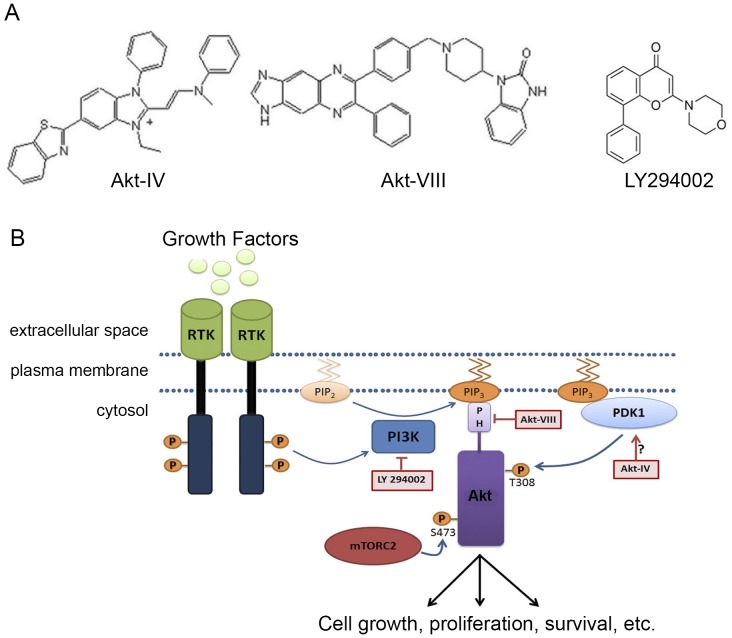Figure 1. Strategy.
(A) Chemical structure of the compounds targeting the PI3K/Akt pathway used in this study. (B) Scheme of Akt signaling pathway, which regulates cell survival, showing the point of action of the drugs shown in A. Akt phosphorylation and activation result from its recruitment to PIP3 at plasma membrane, after which it exerts cytoplasmic and nuclear functions. Accumulation of PIP3 classically follows ligand (L) binding to tyrosin kinase cell-surface receptors (RTK), adapter proteins (AP) recruitment to RTK and finally, PI3K activation to phosphorylate PIP2 to PIP3. While Akt can be activated by the UPR it is not known if Akt can also regulate the UPR.

